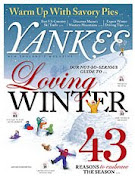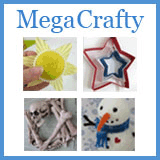I'm sorry to say that this post is long overdue, but I've been a bit distracted lately with the SYTYC competition.
I was as excited as anyone about the upcoming olympics. In fact I had a whole bunch of craft projects and edible treats dedicated to the games. But I've decided that I'm not posting any of them.
A lot of you probably heard about what happened about a month ago between Ravelry and the US Olympic Committee (USOC). The USOC's poorly worded (at best) cease-and-desist letter regarding the knitting event on Ravelry (the Ravelympics) and the sale of olympic themed patterns on the site, made headlines all over the world.
Not only am I a member of Ravelry and a dedicated fiber artist, but I also have a background working in intellectual property (IP). I'm interested in any situation where IP and crafting intersect, but because I love to work with fiber I followed this with great than usual interest.
Before I get into that though, let me just say that this is not going to be a total bashing of the USOC and their C&D letter. The letter was no doubt very insulting and obviously left a bad taste in my mouth but the fact that they sent a C&D letter in and of itself doesn't really bother me.
And I'll tell you why...
First: The USOC has the trademark rights to the olympic rings logo and the "olympics" name as it relates to their brand. It's their legal obligation to defend that trademark against anyone who may be infringing on it. And I know the argument a lot of crafter's have... I'm only a small crafter selling a pattern I made to celebrate the games. It's not like I'm going to effect them or take any business away from them they are huge!
Unfortunately once you start to sell something commercially it doesn't matter how big or small you are- if you are infringing on a trademark the owners of the trademark are legally obligated to protect it or they risk loosing it. You're right, you're not effecting their bottom line but if they let someone small continue to use a trademarked item illegally then someone big can come along (who will effect their bottom line) and make an argument that they can use it too.
And I'll tell you why...
First: The USOC has the trademark rights to the olympic rings logo and the "olympics" name as it relates to their brand. It's their legal obligation to defend that trademark against anyone who may be infringing on it. And I know the argument a lot of crafter's have... I'm only a small crafter selling a pattern I made to celebrate the games. It's not like I'm going to effect them or take any business away from them they are huge!
Unfortunately once you start to sell something commercially it doesn't matter how big or small you are- if you are infringing on a trademark the owners of the trademark are legally obligated to protect it or they risk loosing it. You're right, you're not effecting their bottom line but if they let someone small continue to use a trademarked item illegally then someone big can come along (who will effect their bottom line) and make an argument that they can use it too.
Second: If you are selling something commercially, it's your responsibility to understand the laws regarding trademarks and copyrights. It doesn't matter how big or small your business is, for your own legal protection you should understand the basics.
But here's where this whole situation goes off the rails for me: The insulting tone of the C&D letter. The USOC later issued a statement/appology saying that it was standard boilerplate copy. Well.... not so accurate in my opinion. It's true- they had to reference the specific acts they felt were infringing on them and explain how it was negatively impacting their trademark. But in my opinion they definitely did not have to do so in such a belittling and insulting way. To me, that stepped way over the line. And for that I have lost all respect for the USOC and will not be giving my support to them in any way. Which includes watching the games, supporting advertisers, and posting projects here.
None of the the projects I had planned were for commercial use or going to infringe on their trademark rights in anyway, so I'm not shying away because of those reasons. I simply can't give my support to an organization that so horribly and completely disregards another group's passions while declaring their's so superiror. I know those athletes work hard and dedicate their lives to their sport but the elite among fiber artists dedicate their lives to perfecting their craft. And it's not the USOC's place to pass judgement about which of these pursuits is more worthy.
If you want more information about intellectual property and crafting issues, you check out my previous post on this topic- here.
If you want more information about intellectual property and crafting issues, you check out my previous post on this topic- here.













































